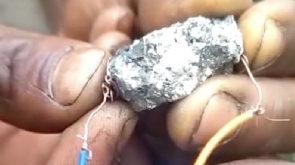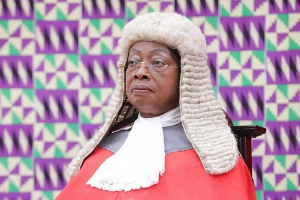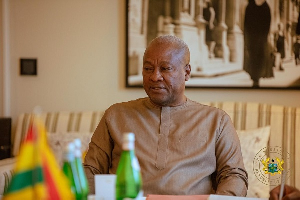Videos wey show say rocks wey dem find for Africa fit produce electricity don get millions of views online and go viral for social media.
Some social media users dey claim say dis fit give answer to di electricity problems wey dey worry Africa.
Dis na big claim, so we don show experts di video and dem explain to us why such properties dey highly unlikely to produce light.
Wetin be di spark wey light up for di viral videos
Di videos wey pipo don share well-well for online show electric sparks wey light up between two rocks as dem join di rocks togeda.
South African businessman Daniel Marven, wey get ova 800,000 followers for twitter also share dis video and pipo don view im tweet ova two million times.
Anoda Twitter user comment for Marven post with different video of one man wey switch on one LED light bulb by touching wires wey connect am to one small piece of rock.
Marven also post dis video few hours later, and e get more than one million views.
Popular Twitter page, African Archives pick up and share both videos for dia handle and e go viral, with ova 35 million views.
Where dem for film dis videos?
For di video where one man dey light up electric bulb by using one rock, you go hear voice wey dey speak Swahili with accent from DR Congo.
With di video of di two flashing rocks, one reverse image search reveal say dis don bin appear before for di Facebook page of di Mohamed First University, for Oujda, Morocco on November last year.
Although dem fit don upload di original video itsef earlier.
Di caption just say: "Lithium!!?" but with no further details. BBC don contact di university but neva receive any reply yet.
One Twitter post wey show up later claim say dem find dis sparking rocks for Zimbabwe.
Di poset add say dis discovery "go help our kontri get...sustainable energy."
Zimbabwe na Africa largest producer of lithium, one metallic element wey dem dey use for di production of batteries for electric cars and mobile devices.
Dem fit generate electricity from rocks?
"I doubt if dis videos represent free electrical energy," Prof Stuart Haszeldine of di School of GeoSciences for Edinburgh University tok.
"I neva see anything geologically like dis and I think say di rocks dey connected to electrical power sources wey no dey included for di tightly framed video."
E say di presence of wetin look like one gloved hand for di lower part of di video wey show di sparking rocks dey very revealing.
E suggest say dis show dat "current dey flow from di out-of-shot battery, through di rock wey pesin hold with di glove (so di current no go flow through di gloved hand) and to earth through di second rock".
Metallic ores na good conductors of electricity, di glove na insulator wey prevent di current from travelling through di pesin body to di ground.
Turning to one video wey show one illuminated LED bulb, Prof Haszeldine say e dey suspicious "because e get three hands (two pipo) for di demonstration".
"To me, e look like say di current flow wen two hands touch, and di wires na illusion - dat na make believe. “
“So e go dey interesting to get a close-up magician wey go look, and see if dem go fit spot out di trick of misdirection."
One screenshot from di video show di moment wen di bulb remain on even though one of di wires don dey separated from di rock.
Dis further show say di rock get nothing to do with di circuit.
Di real power behind Congo minerals
DR Congo dey produce wealth of valuable mineral ores, including coltan (columbite-tantalite).
Wen dey refine dem, coltan dey produce metallic tantalum, one heat-resistant powder wey fit hold high electrical charge, according to Dr Munira Raji of Plymouth University for di UK.
Dis properties make am dey very important for di manufacturing of components wey dem dey use for cell phones, laptops and oda electronics.
Dr Raji say e no dey possible to confam weda any of di rocks wey dem show for di videos na coltan without testing dem for geology lab, but even if na im, e no go generate electricity on dia own.
Based on dis, she say, di claim dat dis rocks fit produce electricity dey wrong.
Dr Ikenna Okonkwo, wey be geology lecturer for di University of Nigeria, don also look di videos for us.
E say di rocks look more like zinc or lead ore. And dis ores, e tok say, certainly no get di ability to power a bulb.
"Maybe [dey fit hold] static electricity of di kind wey dey happen with some fabrics, but e no go fit power LED light bulb."
Dr Okonkwo add say di videos appear to be "some kind of trick".
BBC Pidgin of Thursday, 26 January 2023
Source: BBC




















